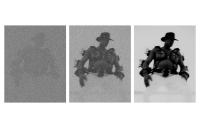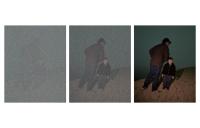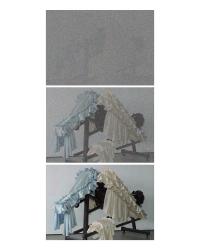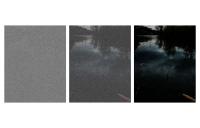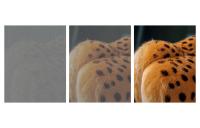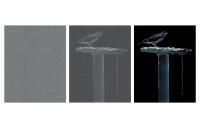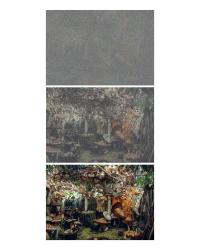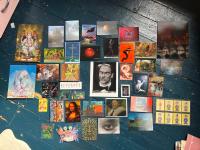Subscribe to the Newsletter
Your cart is empty
Shop nowBetween Computation and Craft
My studio walls tell the story of a fifteen-year obsession with lenticular prints—those ridged, satisfyingly tactile objects that transform as you tilt them or move past them. What began as a casual interest evolved into a serious collection that now exceeds 200 pieces that I have sourced from flea markets, gift shops and specialty dealers on eBay.
Sometimes, we collect without knowing why. Initially lured by their playfulness, shimmer and texture, these kitschy promotional cards and shape-shifting Ganeshes spoke to me in a language I couldn't translate. Equally nostalgic and futuristic, they seemed to communicate photography’s possibilities. For years, they existed separately from my creative work. I often think about the spaces between things—the foggy territories where meaning hasn't yet solidified. These lenticular prints lived in that space for me, hovering at the edge of my practice, waiting for something to pull them into focus.
Recently, I noticed a parallel between lenticular prints and the digital tools I was using. Flip lenticulars combine multiple images into a single surface, revealing them one-by-one as the viewer shifts perspective. Similarly, the CLIP diffusion models of AI image generation progress through distinct stages as they refine noise into meaningful visual content—a step-by-step journey from chaos to clarity.
This realisation opened an entirely new direction in my practice: using lenticular printing to materialise the typically invisible processes of AI image generation. It’s an experiment you can hold in your hands. Milliseconds of digital creation stretched out in a tangible optical trick that unfolds as the viewer moves.
Ben Millar Cole is part of Issue 17 by Guest Editor Torbjørn Rødland.
Check out his Artist Feature Computers Can’t Jump.

